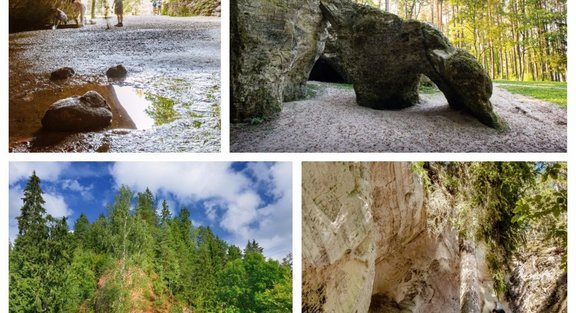
Each of these outcrops has its own story and history. The outcrops are evidence of this area once being covered by the sea, the currents having carried sand, dust and clay deposits which became cemented together to form the outcrops we see today. Meanwhile, the caves are a result of suffosion—fissures which give caves an arch-shaped or triangular form.
Here are 10 cliffs recommended by EnterGauja where you can see the power of nature, hear legends, and feel history.
Sietiņiezis
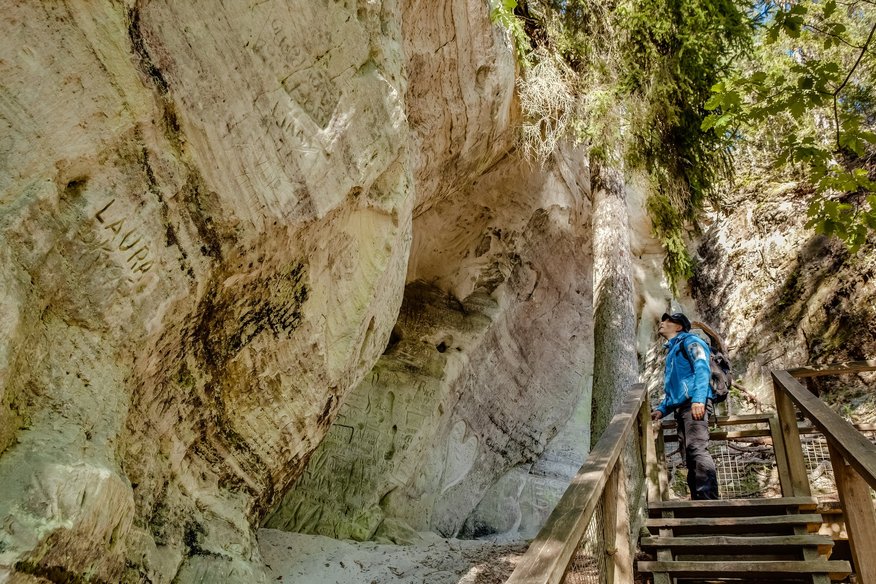
This is the largest white sandstone cliff in the Baltics. Many still remember how, up until the 1970s, an arch—the greatest of its kind for many miles, with a vault of four metres—led to the top of Sietiņiezis, but this collapsed in 1975.
Sietiņiezis translates as “Sieve Cliff,” and its name comes from the fine sieve-like surface of the cliff which is formed by holes made from wild bees. Bees like the heat that Sietiņiezis holds as it warms in the sun.
When you reach the top of this natural tower, you can enjoy a picturesque view of the flowing river, a beautiful blue ribbon decorated with the bright green lace of tree branches.
More information
Location: Kocēni county, Vaidava parish
Zvārte Rock
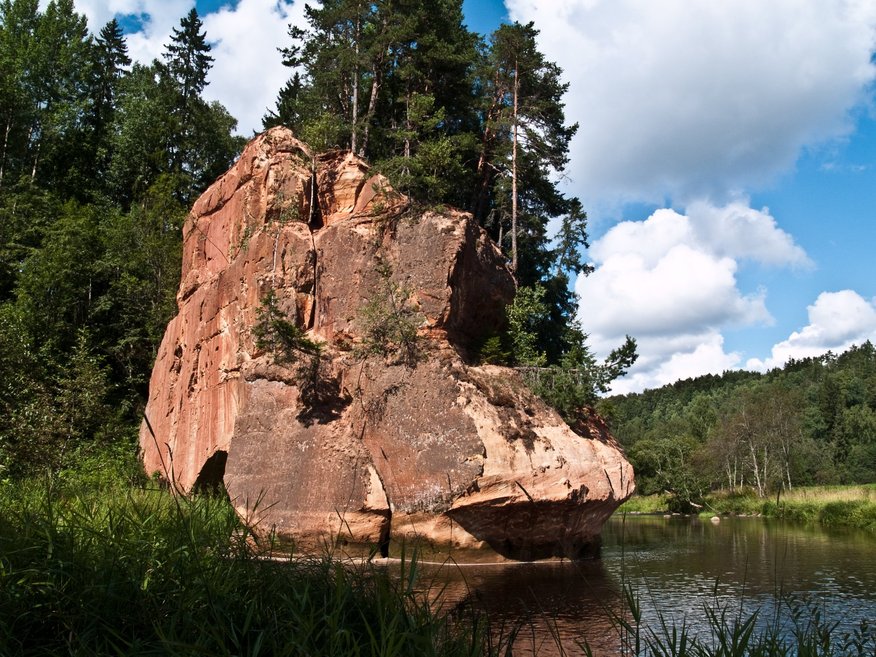
This picturesque outcrop on the banks of the Gauja is made up of two parts. In 1939, to protect it from collapse, the Amata River channel was straightened out. You can still see how the cliff is gradually eroding and becoming overgrown.
The Zvārte Rock is located in Amata county, right on the banks of the Amata River. It can be viewed from various locations, but it should be mentioned that one of the most impressive views is from the top of the 44 metre-tall Zvārte Scarp, which is 200 metres long.
Location: Drabeši parish
Līči–Laņģi Cliffs
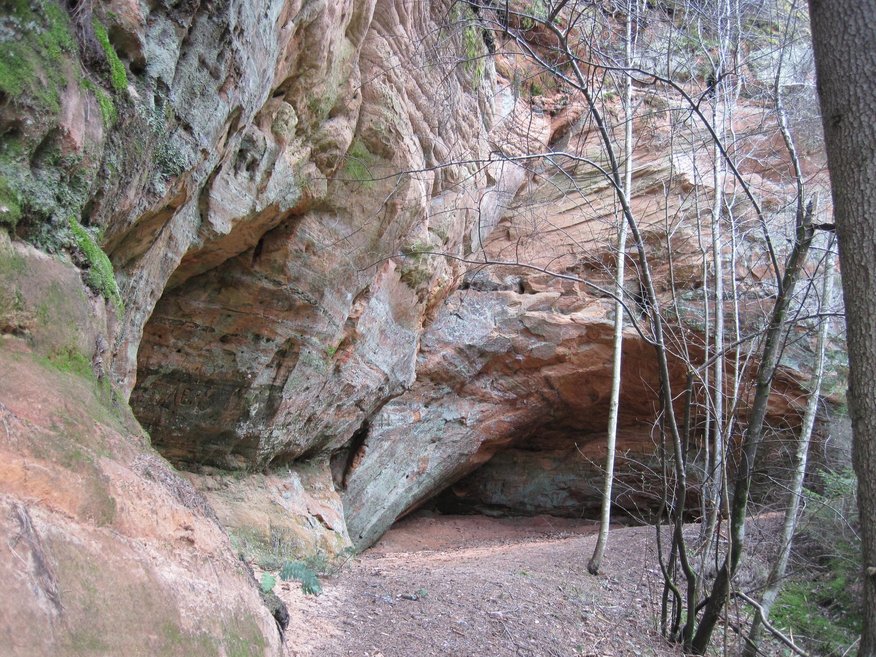
The amazing Līči-Laņģi Cliffs are a unique, kilometer-long cliff wall—a true natural wonder in this region. The cliffs have several caves, and Laņģi Cave is around 50 metres long, which is quite rare for Latvia. The Līči-Laņģi Cliffs surprise many with their beauty and the fact that something so amazing can be found here.
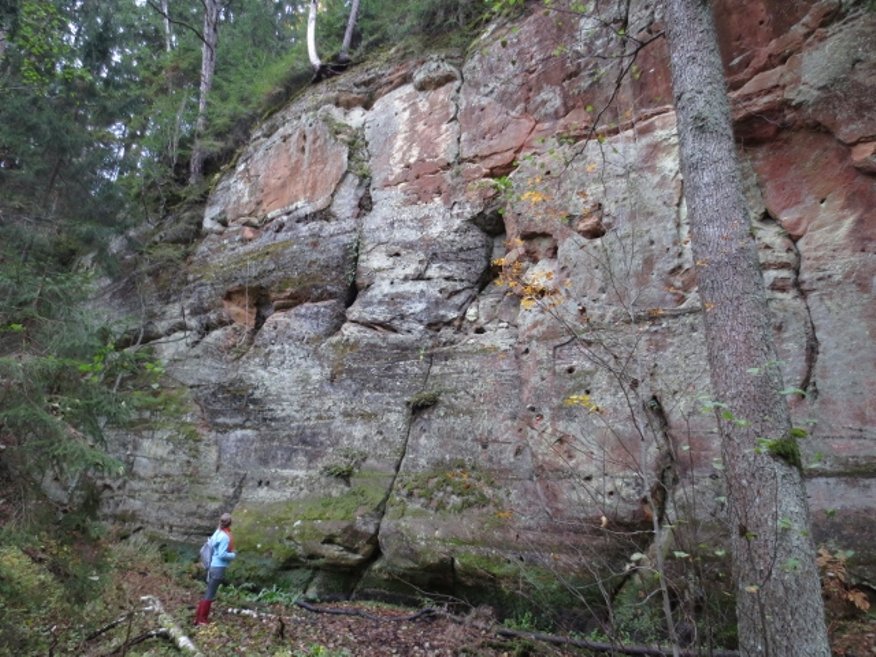
This is a sandstone escarpment on the left bank of the Gauja Valley; however, they can even take seasoned Gauja boaters by surprise, because they cannot be seen from the river. The cliffs are covered in trees, and those who have been to the Bohemian Paradise in the Czech Republic will see the similarities. The maximum height of the Latvian cliffs is around 30 metres.
Location: Liepa parish
Ērgļi Cliffs
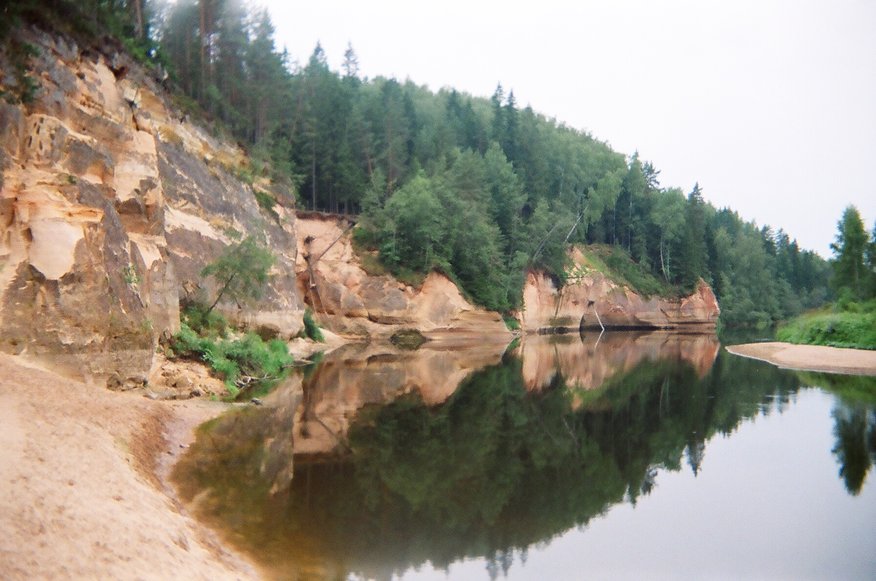
Standing on the viewing platform, your eyes are greeted by the view from the Ēŗģli Cliffs, and you feel the sense of freedom which comes from seeing the earth from a bird’s eye view. The name, Ērgļi, means eagles.
Legend states that the cliffs were previously called the Ērģeļi Cliffs, which translates as organ, because the echo from the cliffs sounds like an organ.
The cliffs are also called the Pieškaļi or Pieškalni Rock, and their uniformity is the most impressive in the whole Guaja Valley. The cliffs are a Protected Latvian Geological Natural Monument, as well as a Latvian and European Union Protected Biotope.
The Ērgļi Cliffs are 5.5 kilometers north of Cēsis and stretch along the left bank of the River Gauja for around 500 metres. They are between 18 and 26 metres tall.
Location: Priekuļu parish
Red Cliffs and Rūcamavots

This is a romantic place very close to Cēsis which is well known for its springs and the red colour of its cliffs. Red is the colour of love, so this is a popular destination for couples who come to enjoy the clear Rūcamavots spring water and strengthen their love.
The most well-known spring in the Red Cliffs is Rūcamavots (Snarling Spring). It comes out of the ground with a slight growl.
The Red Cliffs also contain other small springs.
Location: Pārgauja county, Raiskums
Gūtmanis Cave
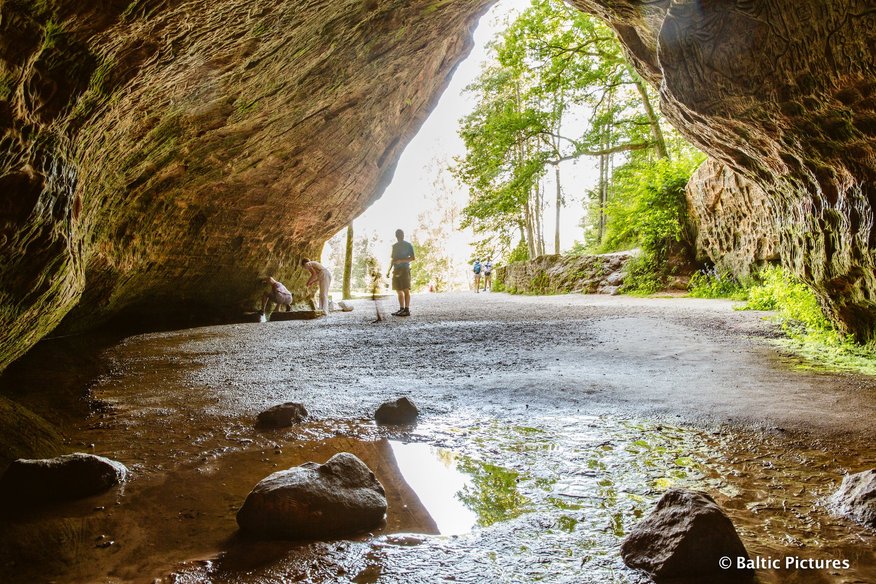
The legendary Gūtmanis Cave is the largest cave by volume in the Baltics at 500m3. The oldest graffiti found on the walls of the cave dates back to the 17th century.
A 1912 guidebooks states that a scrawling from 1512 can be read. However, nowadays, the oldest, partially-preserved carvings are from 1668 and 1677, high up in the cave near the roof on the right-hand vault.
There is a tourist information centre near the cave, where you can find out not only about the cave and surrounding area, but also other natural, cultural and historic attractions in the Gauja National Park.
Location: Sigulda county, 2a Turaidas Street, Sigulda
Liepa’s Great Ellīte Cave and Spring
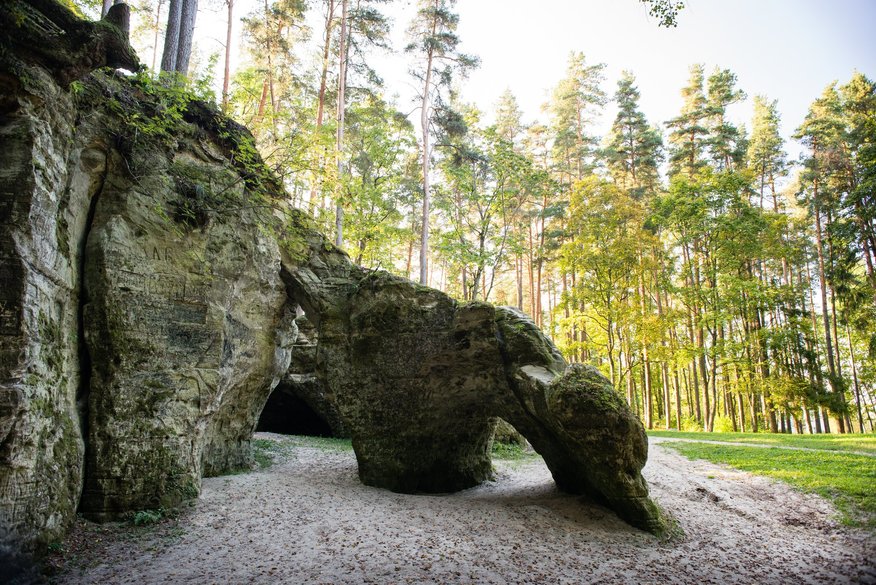
This place is known for its peculiar yet romantic moss-covered formations. With every footstep, it feels more like a home for forest elves or other mythical creatures.
Earlier, the cave was called the Devil’s Furnace, Devil’s Cave, Liepmuiža Cave or Devil’s Oven. It is also said that robbers used to live here who would try and scare others from coming close.
After the collapse of the Sietiņiezit arch, these remained the only natural sandstone formations of their kind in Latvia. The cave is an impressive 23 metres long, and, along with the spring, was an important sacred site.
Atrašanās vieta: Priekuļi county, Liepa parish, Liepa
Lustūzis
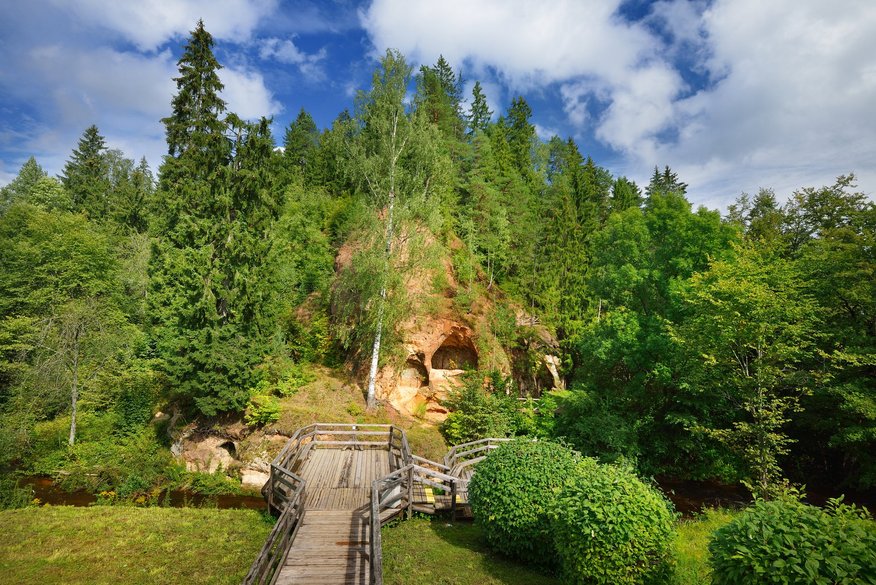
These rocks will certainly be recognisable to anyone who has visited Līgatne at least once. It is the first sight greeting you as you arrive, and is also known as alu iezis (Cave Rocks), because many cellars and caves have been carved out of the rocks. This is the only place where cellars have even been carved in two stories.
The first cellars were created around the middle of the 18th century, mainly for practical purposes. One of the caves has been turned into a wine shop and a small cafe which operates in the summer. For those who wish to enjoy homemade wine in an olden-day atmosphere, this is the place for you. You can enjoy wine by candlelight and take in the picturesque surroundings.
Location: 1A Spriņģu Street, Līgatne
Katrīna's Rock
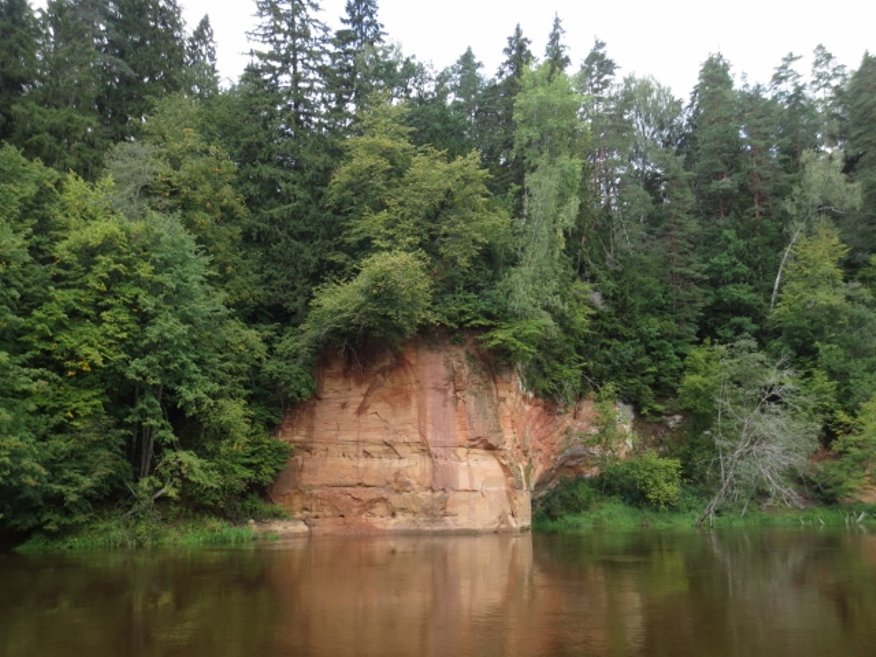
A sad legend tells the tale of a girl called Katrīna who threw herself off the rock and drowned in the River Gauja after a broken heart. This cliff has a proud, 15 metre-tall sandstone relief shaped like a pyramid; the cliff is on a deep curve of the River Gauja, so is semi-circle shaped. There is also a large niche in the cliff.
Katrīna’s Rock is located on a fast river bend near the Līgatne Nature Trails (500m).
Location: Pārgauja county, Straupe parish
Ainavu Scarp
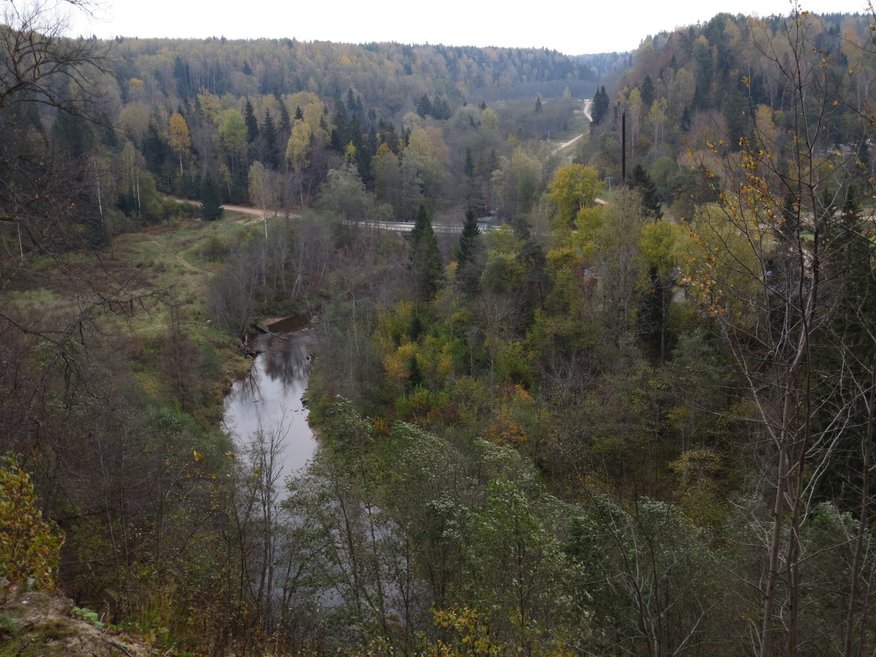
Ainavu (English: Landscape) Scarp is one of the tallest and oldest scarps in Latvia. The rocky outcrop is a mighty 46 metres tall, and the scarp is more than 500 metres long. As you can tell from its name, the scarp affords an amazing view of the Amata Valley in all seasons.
Guntis Eniņš describes it as the most complete stratotype in the Amata suite. There are currently several renovated viewing and picnic spots with benches; as early as the 18th century, owner of Kārļumuiža Manor Karl Eberhardt fon Zievers began installing steps, viewing spots and bridges.
Location: the right-hand bank of the River Amata, near Kārļi, Amata county, Drabeši parish



